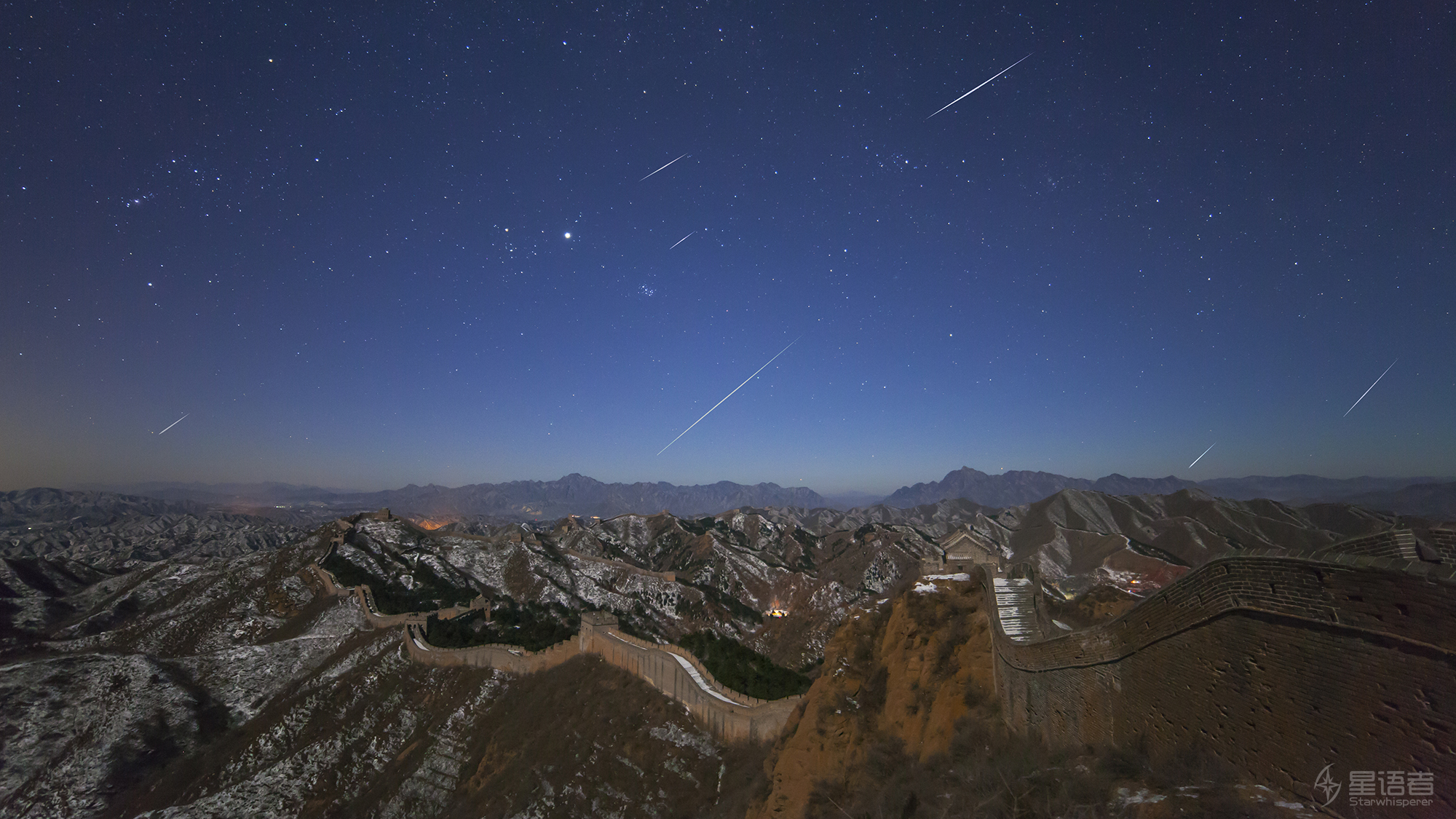2020 January 3
Quadrantids over the Great Wall
Image Credit & Copyright: Cheng Luo
Explanation: Named for a forgotten constellation, the Quadrantid Meteor Shower is an annual event for planet Earth’s northern hemisphere skygazers The shower’s radiant on the sky lies within the old, astronomically obsolete constellation Quadrans Muralis. That location is not far from the Big Dipper, at the boundaries of the modern constellations Bootes and Draco. With the radiant out of the frame at the upper right, Quadrantid meteors streak through this night skyscape composed of digital frames recorded in the hours around the shower’s peak on January 4, 2013. The last quarter moon illuminates rugged terrain and a section of the Great Wall in Hebei Province, China. A likely source of the dust stream that produces Quadrantid meteors was identified in 2003 as an asteroid. As usual, in 2020 the shower is expected to peak briefly on the night of January 3/4. Meteor fans in North America can anticpate a good show to celebrate the new year in moonless skies before tomorrow’s dawn.
长城上空的象限仪流星雨
影像来源与版权:Cheng Luo
说明: 对北半球的天文爱好者来说,每年的象限仪流星雨是一个重要天象。该流星雨以一个被遗忘了的星座命名, 其辐射点位于已经被废弃的象限仪座内,即现今牧夫座与天龙座的交界处,距离北斗七星不远。这幅照片由数帧数字图像合成而来,拍摄于2013年1月4日流星雨极大期。辐射点位于图框之外右上的方向,下弦月的月光照亮了位于中国河北省内的这片起伏的山峦和一段蜿蜒的 长城。 2003年天文学家确认,形成象限仪流星雨的流星体很可能来源于小行星。 像往年一样,2020年该流星雨的短暂峰值发生于1月3日至4日的夜间。北美的流星迷们可以在明天黎明前在无月夜空中观看一场庆祝新年的精彩表演。







